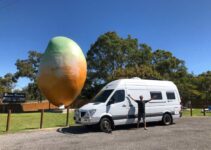Wondering about the best van life internet options? We’ll make sure you’re equipped for the road!
Staying connected while on the road is essential. Not only does it allow you to keep in touch with friends and family as you go, but it is essential if you’re going to be working along the way.
For many van lifers, having access to reliable internet is crucial for them to be able to carry on working and make money. This ultimately funds their van life adventure and makes the entire lifestyle possible.
The aim of this guide is to highlight a few of the best ways of having van life internet and staying connected on the road.
Let’s get cracking!
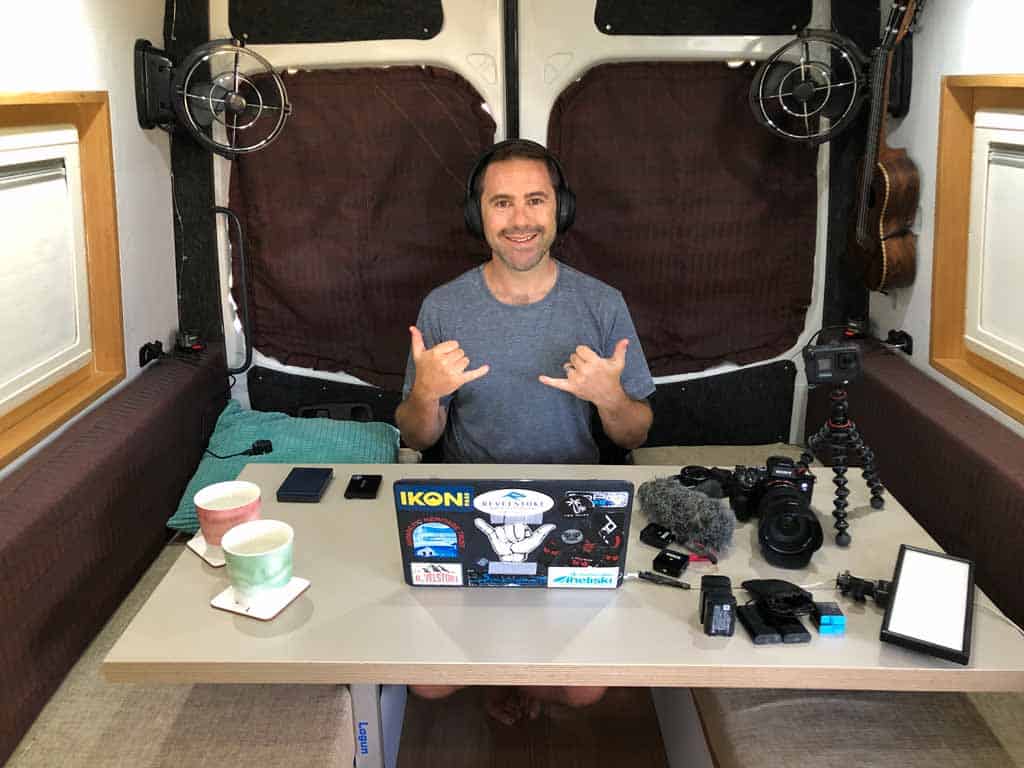
Van Life Internet – The Best Ways To Stay Connected
There are multiple options available to van lifers for internet access and wifi on the road. Each has its benefits and setbacks, which I will discuss as the article progresses.
First up are cellular data plans.
Cellular Data Plan
Using your cell phone as a mobile hotspot is by far the easiest way to access the internet on the road. You don’t require any additional equipment as modern smartphones have a mobile hotspot function built in.
You can simply turn on your hotspot and connect multiple devices to your phone, using its internet connection. Having said this, it is crucial that you opt for an unlimited data plan in order to cater to your data requirements.
Different cellular phone carriers
There are a number of cell phone carriers on the market that you can choose from. However, the most popular options seem to be T-Mobile and Verizon.
Pros and Cons
Both T-Mobile and Verizon have great data plan options and choosing one depends on how much data you tend to go through on a monthly basis.
They also both offer high-speed data in urban areas, but Verizon seems to outperform T-Mobile when it comes to coverage in rural areas.
The strength of the signal can be boosted using a cell signal booster, but I’ll talk about that a bit later on.
Understanding data use and limits
There are a number of limitations when it comes to cell service, especially things such as your data limit and cell service in particular areas.
“Throttling” can also occur, which can happen when you pass a certain amount of data usage, even if you have an unlimited data plan. When this occurs, your internet speed is reduced and can be a major pain especially if you need to do research for work purposes. There is nothing more painful than slow internet access when you have work to do.
“Deprioritizing” can also occur during times when the cellular network is congested. Your internet service will be slowed down temporarily to allow other users to access the network. This can also be an inconvenience if it occurs at the wrong time.
Tips for more efficient data usage
There is a great app called OpenSignal that will allow you to check out the strength of the cell signal of your cell phone carrier in a certain area, ahead of time. This will ensure that you don’t travel to an area with a poor internet signal, especially if you have deadlines to meet.
You will be able to plan accordingly to ensure that you have a reliable internet connection, even if it means a slight delay in plans.
Another great piece of advice is to get a data management app to see how much data you go through on a daily and monthly basis. This will influence the data plan that you eventually settle on.
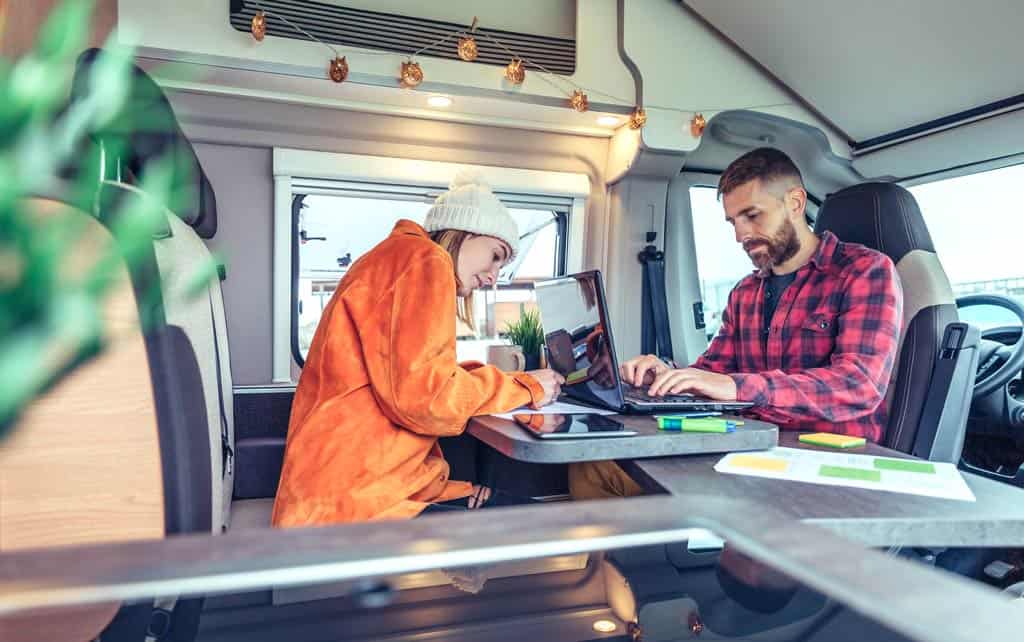
Pros & Cons of using Cellular Data
Like everything in life, there are both pros and cons of using your cellular data for internet access.
On the upside, it’s by far the most cost-effective option, doesn’t require any additional equipment, and is super easy to use.
However, the downsides are that it drains your phone battery, it can only be used when you are within cell phone reception, and the speeds can be slow if you connect multiple devices.
Mobile Hotspot Device
A mobile hotspot device works similarly to your phone’s hotspot function but is a separate device with its own battery.
They can be attached to your cell phones existing data plan or they can have their own independent one. There are a number of different options for mobile hotspots available to van lifers. Let’s take a look at them below.
Options for van lifers
The following providers all offer portable hotspot options to provide you with wifi on the road.
Verizon jetpack
Verizon is by far the most popular and utilized portable hotspot device used by van lifers. They have a great reputation and generally offer great signals, especially in the more remote areas. This is a major advantage for the more adventurous van lifers and the main reason they are so popular.
Some of the other common providers are:
- T-Mobile home internet
- Sprint MiFi
- ATT
Read Next: Check out our post on over 25 ways to make money while living in a van!
Tips for making the most of using a mobile hotspot device
One of the best pieces of advice is to choose a different carrier for your cell phone plan. This will ensure that you will have mobile internet on at least one of them if the other network is down.
Pros & Cons of Using Mobile Hotspot Devices
The upsides to mobile hotspot devices are that you can connect multiple devices at the same time, speeds can often be faster than your cell phone hotspot, and your cell phone battery won’t get drained when you use it.
On the contrary, the downsides are that it is a separate piece of equipment with its own battery that will need to be charged, the hotspot data plans can be expensive, and they also require a cell phone signal to function.
Starlink for RV
Starlink Internet has been one of the breakthroughs for van lifers allowing them to work in the most remote locations. This is because it doesn’t require a cell tower to provide fast and reliable internet on the road.
Instead, Starlink uses satellite internet and thus, has opened up a whole new world of possibilities. Now you can watch your favorite Netflix show wherever you are in the wild, have those important Zoom calls without rushing back into town, upload photos and videos to your blog, and keep in touch with your loved ones.
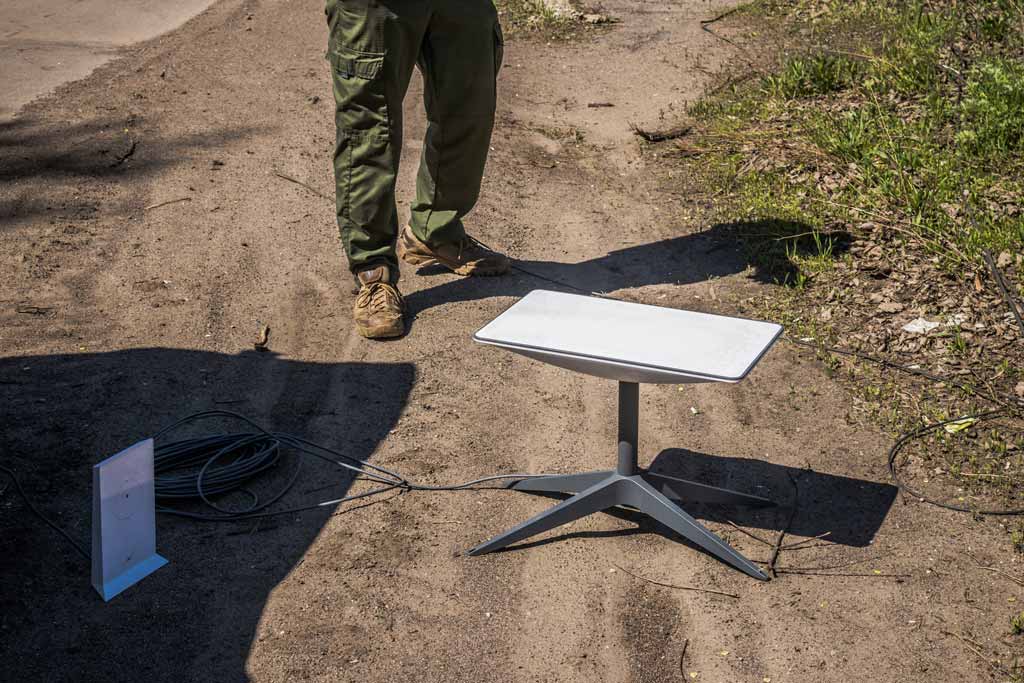
Costs vs benefits
The setup cost is around $600 for the satellite dish (Dishy) and the router which is in addition to the monthly cost of $150 for the RV plan. This is obviously super expensive but the benefits that Starlink provides justify the price, especially if you require usable internet as a non-negotiable.
It is especially beneficial to those who have constant Zoom calls on the road and who are successfully able to work a conventional 9-5 job on the road. Where cell reception has its limitations and can’t provide a signal, Starlink steps in to save the day. And the best part is that it’s only getting better.
Understanding limitations
It isn’t all rainbows and butterflies, unfortunately, and there are a few limitations when it comes to Starlink.
Firstly, it requires an AC outlet with enough capacity for about 60 – 70 watts. This means that you will need to ensure that you have a powerful enough system to run it. If not, you’ll need to make the necessary upgrades in order to run Starlink, which will ultimately add to your van costs.
Secondly, Starlink requires a clear view of the sky in order to function properly. This means that there can’t be trees or mountains blocking the Dish. You might have to rethink where you park your van and possibly won’t be able to park in that prime spot deep in the woods.
Pros & Cons of using Starlink
The major upside of Starlink is that it functions in the most remote location with zero cell phone reception. The other advantages is that the internet is super fast (think speeds up to 100mbps), unlimited data plans are available, and it even works cross-border when RVing in Mexico and Canada.
The major downside, unfortunately, is that it is expensive. It’s also quite bulky and takes up a fair bit of space, can’t be used while you’re driving, and requires a lot of power.
“Free” Public WiFi
There are other forms of “free” Wi-Fi available to you on the road. I say free in inverted commas because they aren’t actually completely free. You end up paying for it in some way, shape, or form.
The following places offer “free” wifi to van lifers:
Coffee shops, fast food outlets, and other sources
Coffee shops generally offer free Wi-Fi and places like Starbucks have pretty reliable Wi-Fi. They also have branches throughout the country on almost every main street so you can find wifi in most towns you visit.
Large fast food outlets such as MacDonald’s and Taco Bell also generally have Wi-Fi available.
Finally, other outlets such as Walmart, Target, Home Depot, public libraries, and even some grocery stores offer in-store Wi-Fi to their customers. Note that the Wi-Fi is only available in-store so you won’t be able to access it from the outside in your van so it’s not the best option.
Considerations
Bear in mind that your privacy is not always protected when using public networks, so be sure to always be mindful when using public networks.
If you require a fast internet connection, then public Wi-Fi hotspots might not be the best option for you. They can also be a bit unreliable so don’t count on them to always be working. Have a backup plan if you have a deadline.
Pros & Cons of using free public WiFi
The upside to public Wi-Fi hotspots is that there are a lot of them to choose from. So, no matter where you go in the country, you should be able to find a working one.
The downside to public Wi-Fi, especially at coffee shops or restaurants, is that they aren’t entirely free – you pay for them in some way when you buy that coffee or a burger. They are also generally pretty slow, unreliable, and aren’t the safest networks around.
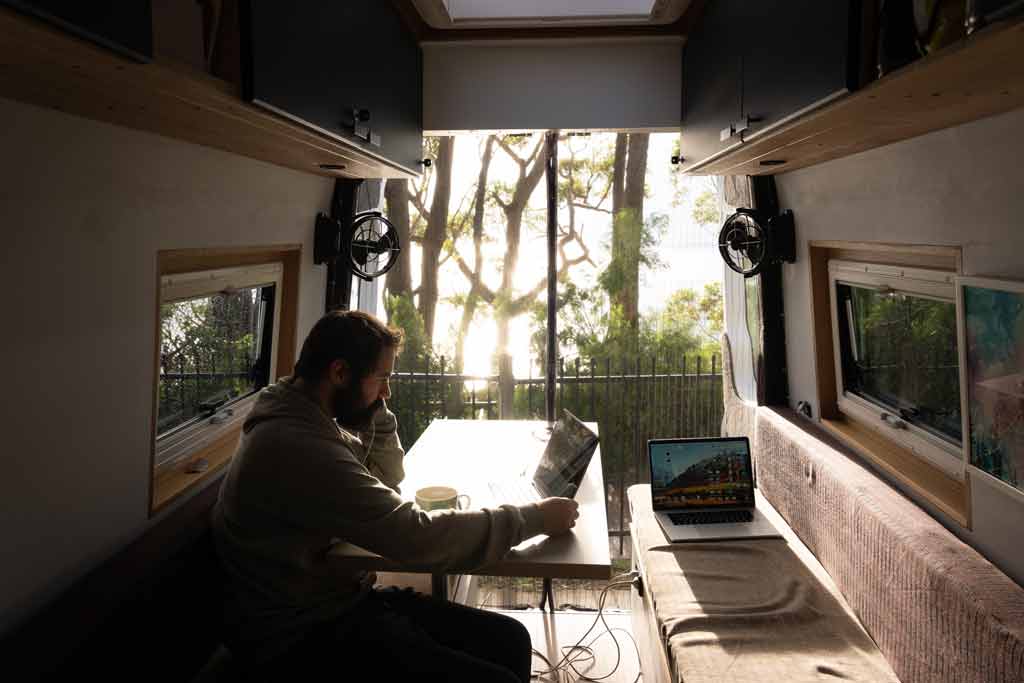
Cellular Boosters
Cell boosters are a great purchase for when you require internet on the road and your cell service is poor.
A cell booster will boost your cell signal by a bar or two, but it still requires some form of signal in order to work. This means that it can’t just create a signal if there isn’t any around.
The downside to cell boosters is that they are quite expensive and can sometimes require professional installation.
Having said this, they are definitely worth considering if you wish to boost your existing cell phone signal, provided that you’re not going too far off the beaten track and into the abyss.
Data-Saving Tips
If you are worried that you’re exceeding your data allowance, there are a few methods that you can apply to try and reduce the amount of data you use. These simple techniques will help you to save data if you’re not on an unlimited data plan.
- Download series and music when you’re in a Wi-Fi zone to access when you’re offline. This will ensure that you don’t burn through your own data and apps like Netflix and Spotify allow you to play your files offline when you’re out of signal or on flight mode.
- Only upload large videos or photo albums when you have fast, reliable, free Wi-Fi. This will ensure that you preserve your data as high-resolution YouTube videos and photos eat through data.
- Turn off the auto-refresh, auto-download, and auto-update functions. Even when you’re not using the apps on your phone, they can be using data without you knowing. Turn off all these auto settings to prevent it from happening.
- Lastly, select the “Use Less Data” setting on Instagram. This will stop Instagram from pre-loading videos before you get to them. If you don’t have this setting turned on, videos will preload even if you never end up watching them.
This post may contain affiliate links. That means if you make a purchase a product we recommend using the links in this article, we may receive a small commission at no extra cost to you. We promise to use this pocket money to buy lots of coffee and fuel for the campervan to keep us enjoying #VanLife for just a little longer. We appreciate your support, and only recommend products we know and trust. Thank you friends!


